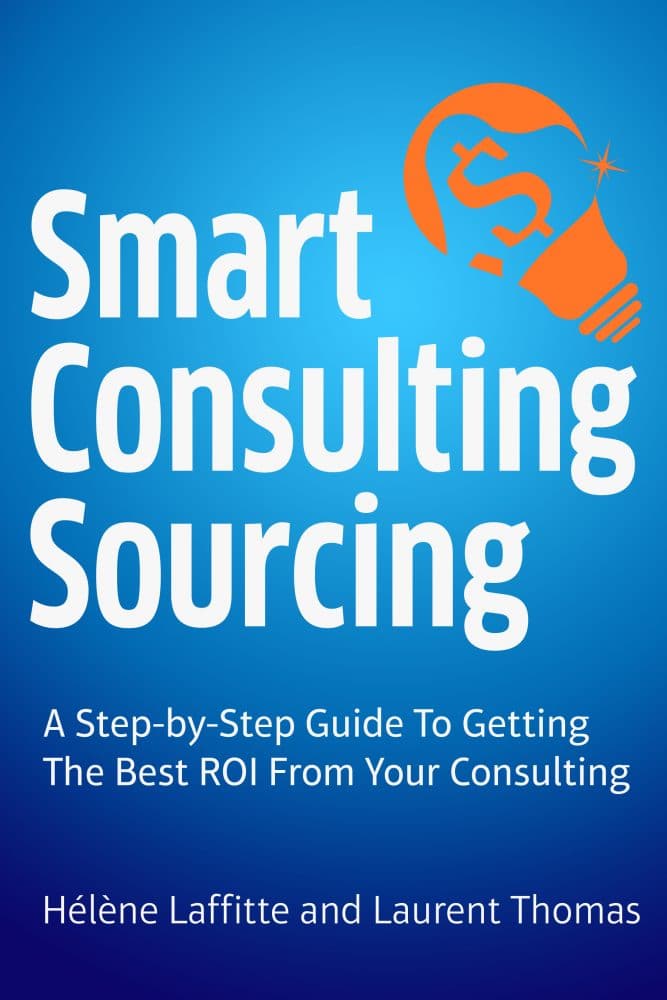
9 tips to successfully implement demand management for consulting
Making mistakes is human. Most cultures will penalize you for errors, promoting the myth, “Always doing right the first time.” But the reality in the enterprise is very different, much closer to a try and error process.
9 tips to successfully implement demand management for consulting
In Procurement, like in other functions, executives try new methods and adjust them with the results. They build on best practices from other professionals and companies and adapt them to their context.
“A mistake consistently repeated is not a mistake anymore. It is a choice”- Paulo Coelho
You can take the tips we give you in this article as food for thought to implement demand management for the consulting category.
READ ALSO
According to the CIPS, Category Management enables procurement professionals to focus their time and conduct market analysis to leverage their negotiations fully and correctly manage their suppliers in alignment with the corporate objectives.
1. Spot negotiate false discounts and focus on value –
Many Procurement Executives put a lot of time and effort into price negotiation and daily rates for Consulting Services. They leave the negotiation table with a 5% discount, with the feeling of having accomplished their duty. But is it so really?
Consulting Firms know the game well. They build a 5% discount into their pricing. And if you ask for a more significant discount, they can simply descope or staff down their project.
Descoping will hurt the real value you are getting from the project, and staffing down will likely cause delays in execution.
And getting lower on the list of priorities of your Consulting providers? It doesn’t sound right.
If you want to make significant savings, you need to take control of the tap; not reduce the bucket’s size. But still, 47% of companies don’t use demand management or a make-or-buy strategy for Consulting Services.
And that’s a big mistake we like you to avoid.
2. Get rid of your Misconceptions about Demand Management –
Consulting is a strategic lever to accelerate the execution of your strategy. However, the pressure on operational budgets won’t go away. And Consulting, apart from restructuring projects, is still allocated to OPEX.
Demand management allows the teams to make the difference between the “must-have” and the “nice to have.” You can keep your money for what is really important.
3. Recognize the Necessity of a Transformation Roadmap –
Once your strategy is clear and shared within your Company, you need to build the Transformation Roadmap, or in other words, the IKEA notice to execute your strategy.
Breakdown the work to be done and identify the associated main workstreams and the skills and objectives. These workstreams should be led as stand-alone projects with or without external support.
4. Prioritize Your Projects –
You have a list of projects to be launched to execute your strategy, but you know that you cannot do them all simultaneously.
Define an analysis grid to sort your projects to determine which ones are more important. Impact vs. budget is often a good start, but nothing prevents you from being more creative in your criteria. Try to identify projects that are enablers for other projects with higher priority.
5. Leverage Make-vs-Buy –
This is where the understanding of the skills associated with each project kicks in. You may not have all the resources in-house and may not be able to mobilize all of them for your projects.
For each one of the projects, identify what can/should be done in-house and what can/should be outsourced.
Don’t forget to include a rough evaluation of the budget.
6. Draw the Line & Stay Within the Budget –
The reality of the situation is that you will not be able to handle all the projects this year. In order to keep control of your expenses (or the tap), you have to define what you will spend on consulting for the period, based on where you stand in your transformation (usually from 0.5% to 3% of the revenues).
As a general rule, try to start with those that will generate immediate savings to fuel the additional projects. Another simple principle is to identify projects that will maximize the impact on a given time horizon and accelerate its benefits.
Besides, you need to define what part of the budget will be allocated to strategic projects and what part will be left at managers’ discretion.
7. Start with the High-Priority Projects –
The basic principles in Demand Management require to decide what projects will be outsourced in the next years. Start with the high-priority/high-impact projects.
Once you have reached 2/3 of your targeted budget, have a closer look at the projects still in your portfolio. Do you have projects with lesser priority or impact but an immediate return on investment? Or projects enabling other projects with higher-priority? They might be your next priority.
8. Know what to do when there is No Budget Left For Strategic Projects –
After you allocate your budget, you might end up with projects that are still highly-strategic.
You have several options: you can adjust your budget for this year to integrate them into your portfolio. You can reconsider other strategic projects and reassess the strategic value. You can also reduce the “Use directly” budget to include one or two strategic projects.
9. Ask yourself the right questions –
When setting your priorities, it’s essential to ask the right questions.
Demand Management has to be rooted in a robust decision-making process that maintains the Company’s strategic direction while controlling the costs.
-
On the strategic value of the project
-
Is this project an enabler for another strategic project?
-
What is the expected impact of the project?
-
How much are we willing to pay for this project?
-
What is the best timing for this project?
-
Will you need these skills for other projects in the next 3 years?
-
-
On the externalization value
-
Are the skills involved in the project core for your Company?
-
Do we improve the business case if we accelerate the project?
-
Do we have the skills and resources available internally?
-
Do we have the necessary skills and resources to supervise the project?
-
Are there companies that can provide that service?
-
Is there sensitive IP or information involved in the project?
-
Following the tips suggested above, you should be able to position your projects on a simple decision matrix. And this way, successfully implement demand management for the consulting category.
Consulting sourcing tips

How To Manage the Tail Spend – Our 5 Recommended Practices
Discover effective strategies to conquer tail spend management with our comprehensive guide. Explore five recommended practices that will optimize your procurement process, reduce costs, and increase operational efficiency. Learn how to tackle low-value purchases, leverage technology, streamline supplier relationships, and implement data-driven decision-making. Don’t let tail spend derail your budget and productivity—empower your organization with our expert insights and take control of your procurement today.

Consulting Procurement or Procurement Consulting?
Type Consulting Procurement in your browser and look at the results. What do you find? A list of consulting companies that offer their services to help improve your company’s purchasing and/or sourcing capabilities. But is it the same thing as Consulting Procurement?

7 secrets to always work with the best consultants
7 secrets to always work with the best consultants
Previous Weeks’ issues

Exploring Smart Contracts in Business | This Week in Consulting
In this edition of This Week in Consulting, we’re delving into the nitty-gritty of smart contracts, exploring their evolution, practical applications, and the technical considerations that come with them.

Warehousing Wisdom: Trends, Tactics, and Insights | This Week in Consulting
In this edition of This Week in Consulting, we’re diving deep into the world of warehousing management, uncovering the secrets to success in this high-stakes game.

From Stormy Seas to Steady Waters: Mapping the Path Forward in Global Real Estate | This Week in Consulting
In this issue of This Week in Consulting, we dive deep into the challenges and opportunities that lie ahead in the global real estate industry for 2024.
Choose the best next step for you
Buy the Book
Talk to us
Hélène Laffitte is the CEO of Consulting Quest, a Global Performance-Driven Consulting Platform and author of “Smart Consulting Sourcing”, a step by step guide to getting the best ROI from your consulting. With a blend of experience in Procurement and Consulting, Hélène is passionate about helping Companies create more value through Consulting.







